Little Known Victims of the Lincoln Assassination
Even when you’re the president, it can sometimes be hard getting people to hang out with you. That’s the trouble Abraham Lincoln had on April 14, 1865. If he could have foreseen the events of that night, he probably wouldn’t have wanted to go to the theater either.
The Lincolns were originally set to attend the theater with General and Mrs. Grant but the general had business in Philadelphia and was pulled away. There was some scrambling to fill the hole in the party but Clara Harris, daughter of a prominent New York family, and her fiancé Henry Reed Rathbone were eventually selected.
It was Rathbone who was the first line of defense after John Wilkes Booth performed his deadly act. The young major jumped to attack Booth but the sinister assassin used his knife to slash the major’s left arm open from elbow to shoulder. Sorely hurt, Rathbone made another attempt to stop Booth but was shrugged off. The assassin jumped from the box and made an easy escape out the back of the theater. Back in the box, Rathbone crumpled to the ground, weak from blood-loss, and Clara Harris and Mary Todd Lincoln began to scream.
The other theater goers, first alerted to the trouble by Booth making his noisy escape, were thrown completely into chaos when they saw what was happening in the box. Clara Harris was fairly covered with her fiance’s blood as she tried to stop the bleeding with a handkerchief. Mrs. Lincoln was inconsolable, mistaking the major’s blood for her husband’s. The screaming from the box extended to the rest of the theater and the ‘doctors in the house’ were located and rushed to the president’s side.
The end of Abraham Lincoln is well recorded; he breathed his last at 7:22 AM the next day, April 15, 1865 in a house across the way, surrounded by loved ones and prominent citizens. The continuing tale of Clara Harris and Major Henry Reed Rathbone, however, is less well-known.
Harris and Rathbone married in 1867 and had a total of three children. Rathbone never got over the assassination and blamed himself, suffering “physical ailments, constant fears, and terrible delusions” that worsened over the years. Clara Harris longed to leave him, but it was socially unacceptable at this time to divorce or separate.
The family ended up in Europe, partly for Rathbone’s work and partly so he could seek treatment from Europe’s spas and doctors. It was in 1883 in Germany that the events of 1865 caught up with the tormented family. In the early dark hours of December 23, Rathbone walked into his wife’s bedroom and, after a brief exchange about their children, shot his wife. He then turned a knife on himself, managing to stab himself six times before the servants made it to the room. In a sick replication of the Lincoln assassination, the gunshot victim died and Rathbone survived his knife wounds. Again.
Clara Harris Rathbone was interred in a German cemetery and Major Henry Reed Rathbone was institutionalized in a German asylum for the criminally insane and stayed there for the rest of his life, suffering terribly from paranoid delusions. He died and was buried next to his wife in 1911. In 1952, in accordance with the cemetery’s policy of unvisited graves, the couple’s bodies were exhumed and cremated.
That ends the tragedy of Clara and Henry Rathbone, but there’s more to the story. After all, Clara Harris could wash the blood from her body, but not from her dress. What happened to dress that was, in her words, “saturated literally with blood”?
Clara Harris couldn’t bear to get rid of it or destroy it and simply placed in the back of her closet, hoping to forget it. But in 1866, to the day a year after Lincoln’s assassination, Harris awoke in the night to the sound of low laughter emitting from the closet with the dress. Abraham Lincoln’s laughter. This story was repeated a year later by a guest staying in the room. Harris had the closet bricked in and the dress was closed off from the world, entombed but not forgotten. Later occupants of the house claimed to hear a gunshot on an anniversary of the assassination and see a blood-soaked young woman sobbing and standing with Lincoln.
In 1910, forty-five years after Lincoln’s death and one before Major Rathbone’s, Henry Riggs Rathbone, the son of Henry and Clara, sought to end what he felt was a curse on his family. He broke into the bricked closet and burned the dress to ashes.
The dress is gone but the memories live on. The assassination of Abraham Lincoln was a tragic turning point in history, affecting the lives of everyone in attendance. Think about that next time you accept an invitation to hang out with friends, especially if one of your friends is the focal point of a massively violent civil war.
Sources:
Smith, Gene. “The Haunted Major.” American Heritage, 45.1. 1994, American Heritage Publishing Company.
Many thanks to the helpful Park rangers at Ford’s Theater in Washington, D.C.


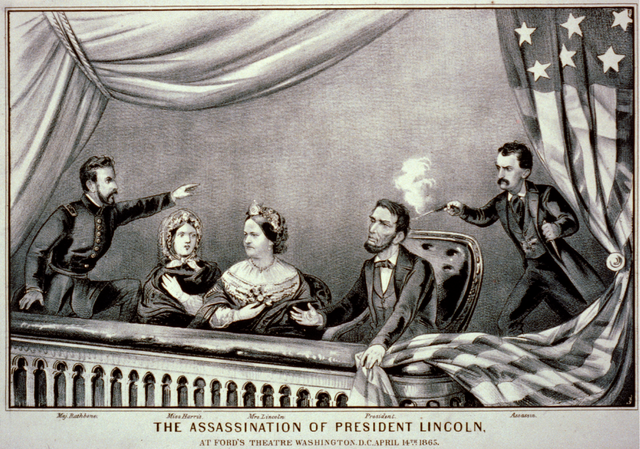
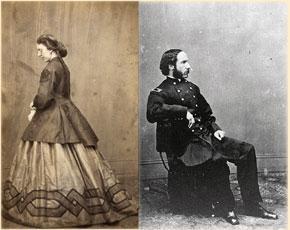
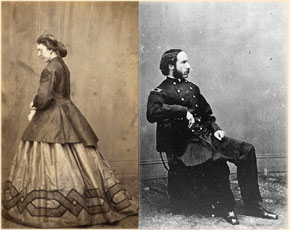
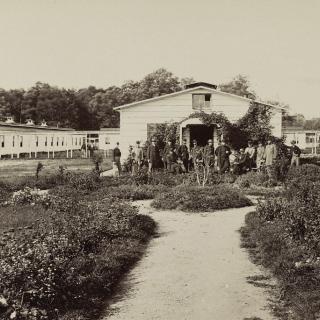
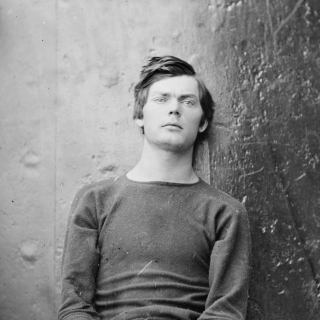
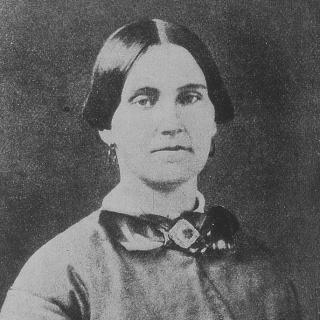
![Sketch of the mythical fuan by Pearson Scott Foresman. [Source: Wikipedia]](/sites/default/files/styles/crop_320x320/public/2023-10/Goatman_Wikipedia_Faun_2_%28PSF%29.png?h=64a074ff&itok=C9Qh-PE1)












